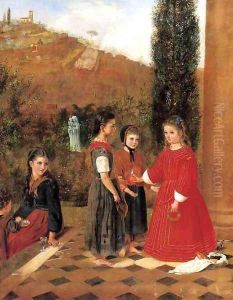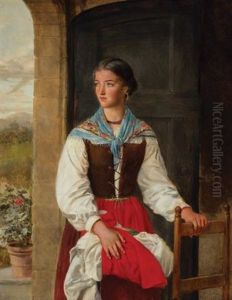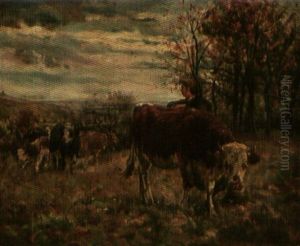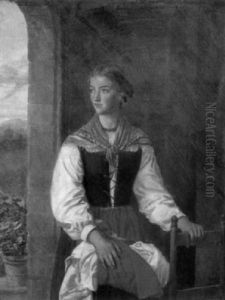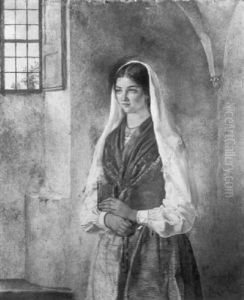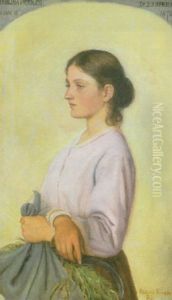Francesca Alexander Paintings
Francesca Alexander, born Esther Frances Alexander on February 27, 1837, was an American illustrator, author, and translator with a notable career that spanned across both the United States and Italy. She was born in Boston, Massachusetts, to portrait painter Francis Alexander and Lucia Gray Swett. Her upbringing was steeped in an environment of art and culture, which greatly influenced her future works.
Alexander's family moved to Europe in 1849 for the sake of her mother's health, and eventually settled in Florence, Italy. There, Francesca's artistry flourished. She immersed herself in the local culture and became deeply interested in the Tuscan folk traditions and the rural populace. Her talent lay in her ability to capture the simple beauty of the peasants' lives and to preserve the folk songs and stories of the region. She collected and translated these into English, illustrating the texts with her own detailed drawings.
One of Alexander's most significant contributions was her collection of Tuscan songs and stories, which she compiled into a book titled 'Roadside Songs of Tuscany.' The book caught the attention of John Ruskin, the prominent English art critic and social thinker of the time. Ruskin was immensely impressed by Alexander's work and published her collection, along with his commentary, in a series called 'Tuscan Songs.' The collaboration with Ruskin brought Alexander considerable recognition and her works became known to a wider audience.
Throughout her life, Alexander continued to illustrate and write, inspired by her devout religious faith and her deep love for Italy and its people. Her other notable works include 'The Story of Ida' and 'The Hidden Servants,' which further emphasized her lyrical and empathetic portrayal of Italian folklore and peasant life.
Francesca Alexander passed away on January 21, 1917, in Florence. Her legacy is that of a cultural bridge between Italy and the English-speaking world, and her works remain a testament to her artistic skill and her humanitarian spirit. She is remembered as a unique figure who captured the essence of 19th-century rural Italy for posterity.
